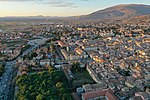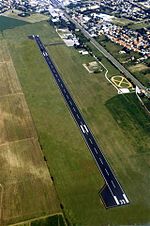Oratory of Nunziatella, Foligno
15th-century Roman Catholic church buildings in Italy15th-century establishments in ItalyCatholic Church stubsItaly Roman Catholic church stubsRoman Catholic chapels in Italy ... and 2 more
Roman Catholic churches in FolignoTourist attractions in Umbria

The Oratorio della Nunziatella is a 15th-century Renaissance-style oratory in Foligno, region of Umbria, Italy. The oratory is located near the 18th-century Chiesa del Suffragio and is named after the Virgin of the Annunciation, considered in those days to be the patron saint of the city. It was restored in the 19th century. Among the decorations is the prominent fresco of the Baptism of Jesus painted between 1497 and 1507 by Pietro Perugino.
Excerpt from the Wikipedia article Oratory of Nunziatella, Foligno (License: CC BY-SA 3.0, Authors, Images).Oratory of Nunziatella, Foligno
Via dell'Annunziata,
Geographical coordinates (GPS) Address Nearby Places Show on map
Geographical coordinates (GPS)
| Latitude | Longitude |
|---|---|
| N 42.9561 ° | E 12.70494 ° |
Address
Via dell'Annunziata
Via dell'Annunziata
06034
Umbria, Italy
Open on Google Maps







